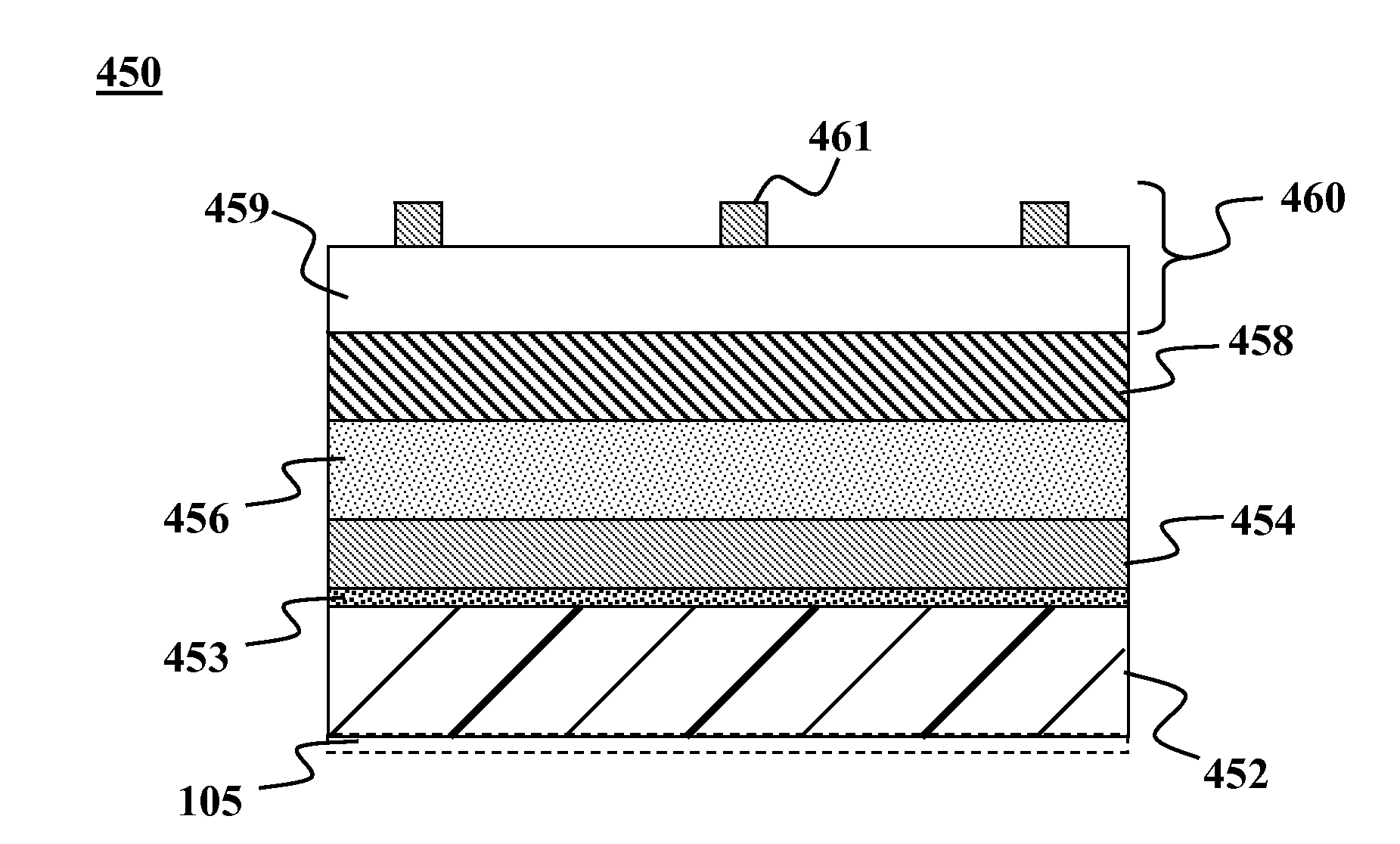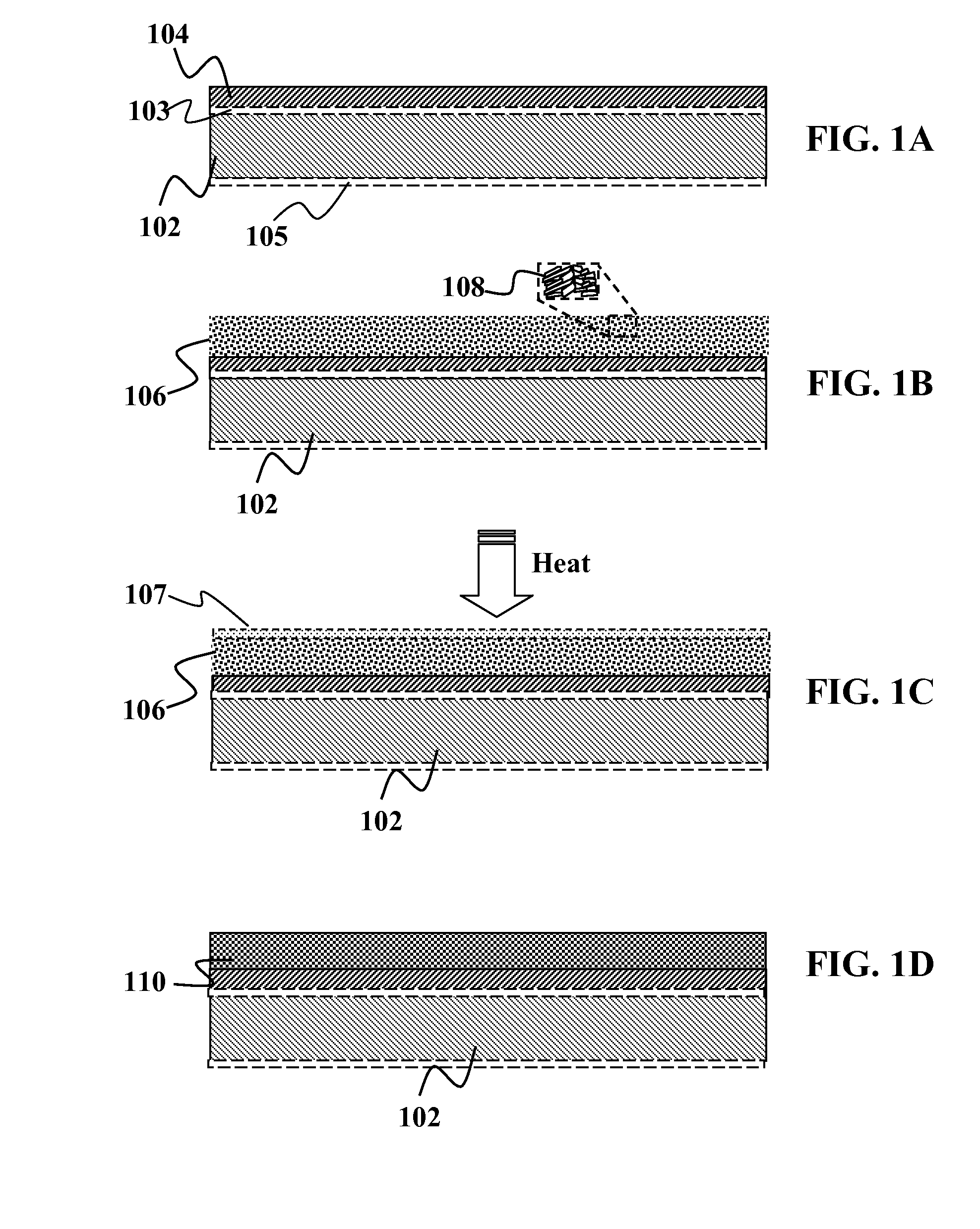Solar cell absorber layer formed from equilibrium precursor(s)
a photovoltaic device and precursor technology, applied in the field of photovoltaic devices, can solve the problems of poor surface coverage, low throughput and high cost of vacuum deposition equipment, and the inability to achieve the precise stoichiometric composition over relatively large substrate areas desired in manufacturing settings, so as to improve wetting, minimize balling, and minimize the effect of balling
- Summary
- Abstract
- Description
- Claims
- Application Information
AI Technical Summary
Benefits of technology
Problems solved by technology
Method used
Image
Examples
embodiment 1
[0125]In one embodiment of the present invention, a two-particle system comprises of a precursor material using a first particle type and a second particle type. It should be understood that for non-particle based systems, the system may be described as a two material system, with the material deposited by other methods such as electrodeposition, electroplating, coevaporation, sputtering, or other techniques as known in the art. As a non-limiting example, the system may include a first particle type that is a non-liquefying ternary Cu—In—Ga particle. Although not limited to the following, the Cu—In—Ga material in this first particle may be In poor, with In about 0.25 moles or less of the IIIA material in the first particle. In this non-limiting example, the ternary particle may be Cu2In0.25Ga0.75. As seen, this ternary is indium poor, relative to the amount of gallium in the ternary. In this embodiment, the In / (In+Ga) or In / III molar ratio in the particle is about 0.25. Optionally, ...
embodiment 2
[0131]In another embodiment of the present invention, yet another two-particle system will be described. The two particle system in the present embodiment comprises of a first particle type and a second particle type. As a non-limiting example, the system may include a first particle type that is a non-liquefying ternary Cu—In—Ga particle. The Cu—In—Ga material in the first particle may be In poor, with In about 0.75 moles or less of the IIIA material in the first particle. In this non-limiting example, the ternary particle may be Cu2.25In0.25Ga0.75. As seen, this ternary is indium poor, relative to the amount of gallium in the ternary. The In / (In+Ga) molar ratio in the particle is about 0.25. Optionally, other embodiments may use In / (In+Ga) molar ratio in the particle of 0.3 or less. Optionally, other embodiments may use In / (In+Ga) molar ratio in the particle of 0.4 or less. Optionally, other embodiments may use In / (In+Ga) molar ratio in the particle of 0.5 or less. This is desirab...
embodiment 3
[0136]In another embodiment of the present invention, a two-material system comprises of a precursor material using a first material and a second material. It should be understood that for non-particle based systems, the system may be described as a two material system, with the material deposited by other methods such as electrodeposition, electroplating, coevaporation, sputtering, or other techniques as known in the art. In this manner, the layer is not actually comprised of a individual particles, but the layer is instead a uniform layer at the atomic or molecular level.
[0137]As a non-limiting example, the system may include a first material that is a non-liquefying ternary Cu—In—Ga particle. Although not limited to the following, the Cu—In—Ga material in this first material may be In poor, with In about 0.25 moles or less of the IIIA material in the first particle. In this non-limiting example, the ternary material may be Cu2In0.25Ga0.75. As seen, this ternary is indium poor, re...
PUM
| Property | Measurement | Unit |
|---|---|---|
| Temperature | aaaaa | aaaaa |
| Fraction | aaaaa | aaaaa |
| Time | aaaaa | aaaaa |
Abstract
Description
Claims
Application Information
 Login to View More
Login to View More - R&D
- Intellectual Property
- Life Sciences
- Materials
- Tech Scout
- Unparalleled Data Quality
- Higher Quality Content
- 60% Fewer Hallucinations
Browse by: Latest US Patents, China's latest patents, Technical Efficacy Thesaurus, Application Domain, Technology Topic, Popular Technical Reports.
© 2025 PatSnap. All rights reserved.Legal|Privacy policy|Modern Slavery Act Transparency Statement|Sitemap|About US| Contact US: help@patsnap.com



